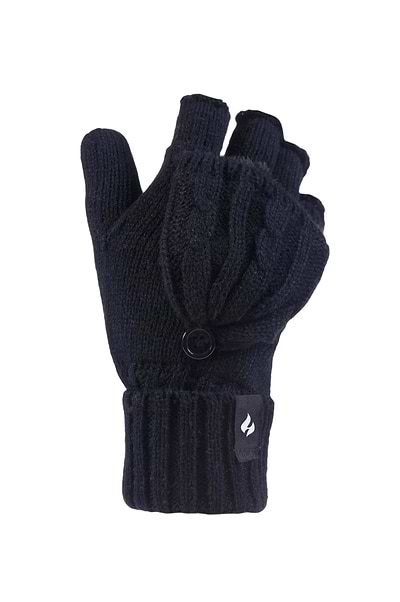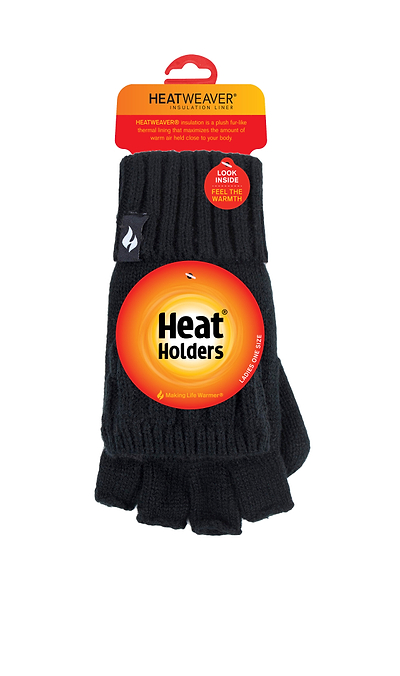Working in a cold office environment can be uncomfortable and distracting. The chilly temperatures can make it difficult to focus and can even have negative effects on your health. However, with a few simple tips and tricks, you can stay cozy and productive throughout the workday.
In this article, we will explore the impact of cold office environments, discuss strategies for dressing appropriately, offer suggestions for personalizing your workspace, share ideas for staying active to generate heat, and provide recommendations for consuming warm foods and drinks. Let's dive in and discover how you can stay warm and comfortable in your office, regardless of the temperature outside.
Understanding the Impact of Cold Office Environments
Working in a cold office environment can have a significant impact on your overall well-being. It is important to understand the science behind cold offices and the health implications they may have.
Imagine stepping into your office on a chilly winter morning. The air feels crisp, and you can see your breath as you exhale. As you settle into your desk, you can't help but notice the discomfort that starts to creep in. The cold seeps into your bones, making it difficult to focus on your work. But have you ever wondered why cold offices affect us so profoundly?
The Science Behind Cold Offices
When the temperature drops, our bodies naturally try to maintain a stable core temperature. This process, known as thermoregulation, involves a complex interplay of physiological responses. In a cold office environment, our bodies work harder to keep warm, which diverts energy away from tasks and can cause discomfort.
As you sit at your desk, shivering slightly, your body is expending extra energy to generate heat. This increased metabolic activity can lead to a decrease in cognitive performance and productivity. Studies have shown that when exposed to cold temperatures, individuals tend to make more errors and have slower reaction times. So, that cold office may be hindering your ability to work efficiently.
Not only does the cold affect our cognitive abilities, but it also impacts our physical well-being. Cold environments can lead to decreased blood flow, resulting in stiff joints and decreased mobility. Have you ever noticed how your fingers feel stiff and your movements become sluggish in a cold office? This is due to vasoconstriction, a narrowing of blood vessels that reduces blood flow to the extremities.
Health Implications of Cold Workspaces
Exposure to cold temperatures for prolonged periods can negatively affect our health in various ways. It can weaken our immune system, making us more susceptible to illnesses such as colds and flu. The cold environment creates an ideal breeding ground for viruses and bacteria, increasing the risk of infections spreading throughout the office.
The muscle tension and stiffness caused by the cold can contribute to musculoskeletal issues over time. Prolonged exposure to low temperatures can lead to chronic pain, particularly in areas such as the neck, shoulders, and back. These discomforts can affect your overall well-being and quality of life, both inside and outside of the office.
Employers must recognize the impact of cold office environments on their employees' health and productivity. Providing adequate heating systems and encouraging employees to dress warmly can go a long way in creating a comfortable and conducive work environment.
Next time you find yourself in a cold office, remember the science behind it. Take steps to keep warm, whether it's wearing an extra layer or using a space heater. Your well-being and productivity will thank you.
Dressing for a Cold Office
One of the simplest ways to combat the cold in your office is to dress appropriately. Layering your clothing and choosing the right materials can make a big difference in your comfort level throughout the day.
Working in a cold office can be quite challenging, especially during the winter months. The constant battle between staying warm and maintaining a professional appearance can be quite tricky. However, with the right strategies, you can conquer the cold and stay comfortable throughout the day.
Layering Techniques for Office Comfort
Layering is key when it comes to dressing for a cold office environment. Start with a base layer made of moisture-wicking fabric to keep you dry and comfortable. This layer acts as a barrier between your body and the cold air, ensuring that you stay warm and cozy.
Additionally, moisture-wicking fabric helps to regulate your body temperature, preventing you from overheating when you move from the chilly office to a warmer area.
After the base layer, add a mid-layer made of insulating material such as fleece or wool to provide warmth. These materials have excellent heat retention properties, trapping your body heat and keeping you snug even in the coldest of offices. The mid layer should be thick enough to provide insulation but not too bulky, allowing you to move freely and comfortably throughout the day.
Finally, top it off with a breathable outer layer to protect you from drafts. This layer should be made of a lightweight and breathable fabric, allowing air to circulate while still providing a barrier against the cold. Look for jackets or blazers that have insulation properties or are lined with a warm material to maximize your comfort.
Remember, layering is not limited to your upper body. Consider wearing thermal leggings or tights under your pants or skirts to keep your legs warm. You can also opt for long-sleeved thermal tops or turtlenecks to provide an extra layer of warmth.
Choosing the Right Materials
When selecting clothing for a cold office, opt for materials that retain heat well. Natural fibers such as wool and cashmere are excellent choices as they provide insulation and retain warmth. These materials have natural thermal properties that help to regulate your body temperature, keeping you comfortable throughout the day.
In addition to wool and cashmere, consider investing in thermal socks, gloves, and even a heated blanket for extra comfort. Thermal socks are designed to keep your feet warm and toasty, preventing them from becoming numb due to the cold. Thermal gloves provide insulation for your hands, ensuring that you can still type and work efficiently without freezing your fingers. A heated blanket can be a lifesaver during those extra chilly days, providing warmth and comfort right at your desk.
It's important to note that while dressing appropriately is crucial, it's also essential to communicate with your office management about the temperature. If the office is consistently too cold, it may be worth discussing with your supervisor or facilities team to find a solution that benefits everyone.
By following these layering techniques and choosing the right materials, you can conquer the cold and stay comfortable in your office environment. Remember, it's all about finding the balance between warmth and professionalism, ensuring that you can focus on your work without being distracted by the chilly temperatures.

Personalizing Your Workspace
Creating a cozy and personalized workspace can make a world of difference in your comfort level. Incorporate elements that help keep you warm and make your office feel like home.
When it comes to personalizing your workspace, it's not just about adding decorative items or organizing your desk. It's also about creating an environment that promotes warmth and comfort, especially during the colder months.
One way to achieve this is by incorporating portable heaters into your workspace. A portable heater can be a game-changer in a cold office environment. Place a small heater under your desk or near your workspace to provide targeted warmth. Not only will it keep you cozy, but it can also help improve your productivity by keeping your body at an optimal temperature.
However, it's important to remember that safety should always be a priority. When using a portable heater, make sure to follow safety guidelines and never leave the heater unattended. Keep flammable objects away from the heater and ensure that it is placed on a stable surface to prevent any accidents.
In addition to portable heaters, another effective way to stay warm is by insulating your desk area. By insulating your desk, you can prevent heat loss through the surface, keeping you comfortable throughout the day.
There are several materials you can use to insulate your desk, such as felt or cork. These soft and insulating materials can be placed on top of your desk, creating a barrier between the cold surface and your arms. Not only will this help keep you warm, but it can also add a touch of coziness to your workspace.
You can enhance the insulation by using desk organizers and drawer liners. These additional layers can provide extra insulation, ensuring that the warmth stays within your desk area.
Personalizing your workspace goes beyond aesthetics. It's about creating an environment that makes you feel comfortable, motivated, and productive. By incorporating elements like portable heaters and insulating materials, you can transform your workspace into a cozy haven that feels like home.
Staying Active to Generate Heat
Physical activity is not only important for your overall health but can also help generate heat and keep you warm in a cold office environment.
Simple Office Exercises
Take short breaks throughout the day to perform simple exercises at your desk. Stretch your arms, legs, and back to improve circulation and loosen your muscles. Consider investing in a mini pedal exerciser or a standing desk to stay active while you work.
The Importance of Regular Movement
Regular movement is crucial when working in a cold office. Take regular breaks to walk around or do some light stretching. This will not only help increase blood flow but also generate heat, keeping you warm and energized.
Consuming Warm Foods and Drinks
Adding warm foods and drinks to your office routine can help keep you cozy from the inside out. Pay attention to what you consume and choose options that can naturally warm your body.
Best Foods to Keep You Warm
Incorporate warm and comforting foods into your meals and snacks. Opt for steaming soups, herbal teas, and foods rich in spices like cinnamon, ginger, and cayenne pepper, which can naturally increase your body temperature.
Hydrating for Heat: Warm Drinks for the Office
Staying hydrated is important, even in a cold office environment. Warm beverages such as herbal teas, hot water with lemon, or even a cup of hot cocoa can help maintain body temperature and keep you feeling cozy.
Conclusion
Working in a cold office environment doesn't have to be uncomfortable or hinder your productivity. By understanding the impact of cold offices, dressing appropriately, personalizing your workspace, staying active, and consuming warm foods and drinks, you can stay cozy and productive throughout your workday. Implement these tips and tricks, and you'll be well on your way to a warm and comfortable office experience.















